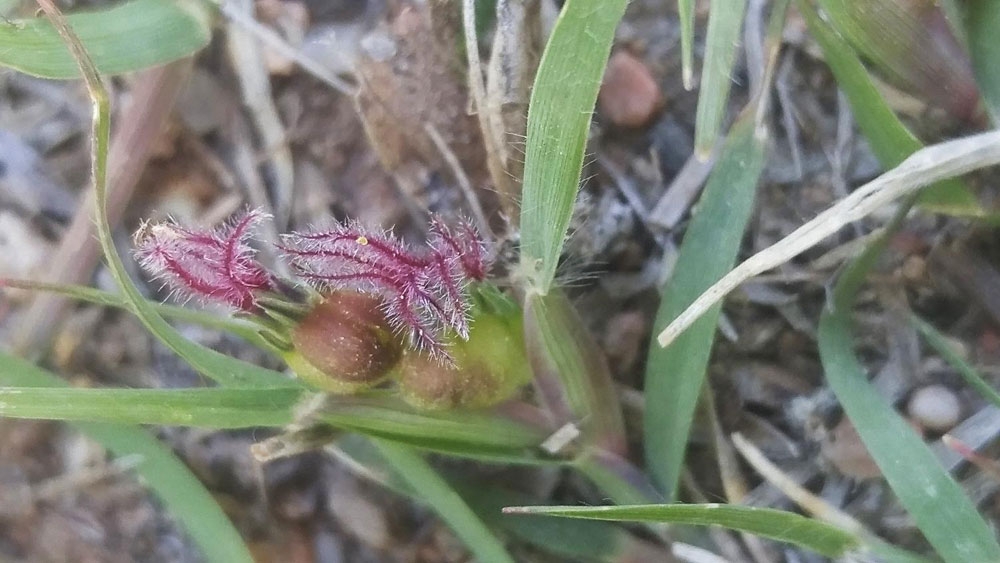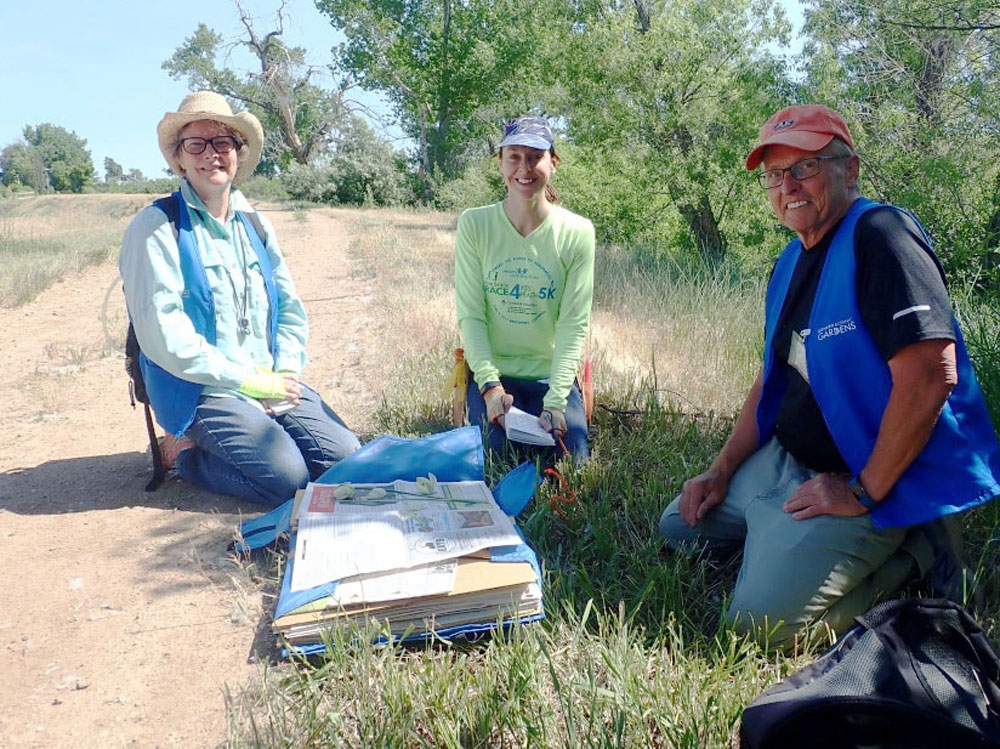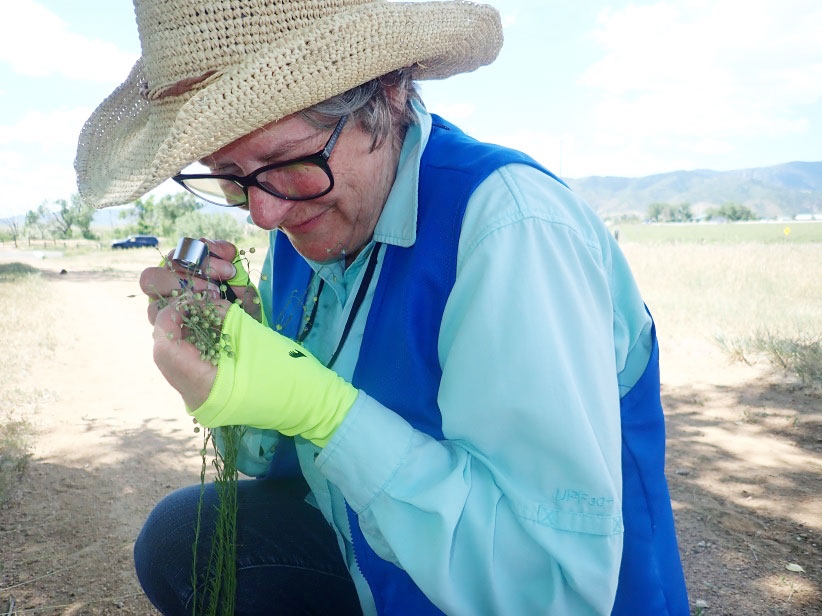Unholster That Hori Hori: Collecting Plants Along the High Line Canal Trail
This summer, Denver Botanic Gardens, with funding from the High Line Canal Conservancy, is conducting a survey of the plants growing along the High Line Canal. Drawing water from the South Platte River, the Canal winds 71 miles from Waterton Canyon in Littleton to the eastern edge of Green Valley Ranch in Aurora. For 66 of those 71 miles, the Canal is accompanied by a multi-use recreational trail, each mile marked by a wooden sign-post displaying the mile number.
Those mile markers bear a unique significance to Chrissy Alba, Gardens research associate in floristics, and myself, seasonal botanist, because they mark the beginning of our field work each day. Accompanied by a devoted volunteer or two, we set out from the research van in search of the day’s mile marker, our hand-held GPS leading the way, laden with the tools of the collector: a lightweight plant press, digital camera, field notebooks, clippers and a simple trowel with a unique name, the hori hori. From the mile marker, we slowly work our way downstream, intermittently stopping to collect plant specimens that will be brought back to the Kathryn Kalmbach Herbarium at the Gardens.
While searching, we are guided by our species list, which has been compiled over the course of the summer and lists all of the plant species that we have already collected. This list will continue to grow throughout the season; we have already found nearly 200 species in the first six weeks of the project! Our goal each day is to collect plant species that are not on the list, but only if it has flowers or fruits, as these reproductive parts are often critical for identification.
When we find a plant in flower or in fruit that isn’t on our list, we must ask ourselves one final question before unholstering the hori hori: are there others like it nearby? If not, we typically won’t collect it, allowing the genetics within that individual to remain part of the ecosystem. Instead, we will make note of it in our field notebooks, adding it to a secondary “observational” species list. The field notebook also contains specific notes for each specimen, including habitat type and other plant species growing nearby. These qualitative data are intended to provide a “snapshot” of the immediate environment in which the plant was found.
There are two main categories of plants that we collect on the Canal: those with roots we can collect and those with roots we cannot collect. The roots often provide important information for identification, and for this reason, we want to collect specimens with roots intact whenever possible. Although we’d love to collect the roots of a coyote willow (Salix exigua), for example, it is neither feasible nor necessary. Instead, we use our clippers to collect twigs bearing reproductive parts (flowers or fruits), leaves and any other identifying characteristics, such as thorns.
Roots or no roots, all specimens go straight into the field press, a lightweight nylon-and-cardboard version of the traditional heavy wooden frame. The final step is to place a small amount of green leaf tissue from the specimen into a coin envelope, to be preserved for future genetic studies. Plant tissue is needed to address a wide variety of research subjects, ranging, for example, from the drought tolerance of the eastern cottonwood (Populus deltoides) along the Front Range to the genetic makeup of the invasive Dalmatian toadflax (Linaria dalmatica).
All told, the process of collecting plant specimens is a pleasantly gratifying, albeit quite slow, process. There is a certain satisfaction that comes to any collector of treasures, no matter what form they might take: each specimen brings you one step closer both to completing the whole picture and to uncovering a new realm of unanswered questions.
This blog post was written by Audrey Dignan, seasonal botanist in the Research & Conservation Department.
Gallery




Comments
High Line Canal
Such a worthy project; the High Line Canal is an area treasure (and HOT! kudos to Chrissy, Audrey and all the volunteers for working day after day in scorching heat).
Add new comment